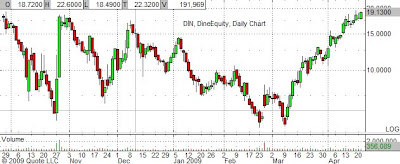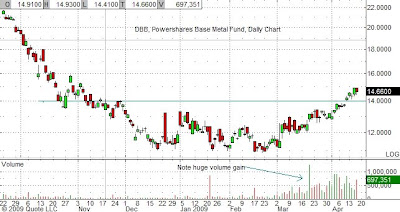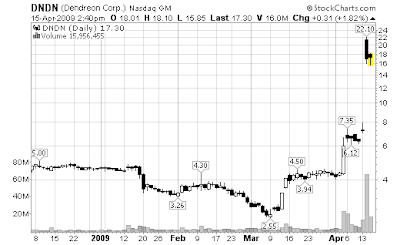
How about going into a restaurant and ordering right off your place mat? Or covering your walls with a thin flexible plastic film that can not only light up your room but turn it into a giant video screen? Or rolling up your TV or computer screen into a scroll and popping it into your carry-on luggage? Does all this sound like science fiction? Well, it's not, due to recent advances in lighting technology—more specifically, organic light-emitting diode (OLED) technology.
OLEDs aren't new. In fact, they're already being used in small display items such as digital cameras, cell phones, and car stereos. But there are problems in translating them to a larger screen format. Many companies, in collaboration with major universities (Princeton and USC in particular), have been working to solve these problems and it looks like they're getting close.
What is an OLED?Many of you may not have heard of this technology. Briefly, an OLED is made by placing a series of organic thin films between two conductors. When an electrical current is applied, light is emitted. Don't think that the organic part of the device is something culled from your compost heap. What “organic” refers to here is that the light-emitting substance is carbon-based.
The really great feature about OLEDs is that they emit light and because of this they do not need to be backlit as do LCDs, making them highly energy efficient and very thin. This makes OLEDs perfect for things such as TV and computer screens as well as all sorts of exciting non-traditional, power-efficient lighting products.
I wanted to discuss both screen and lighting technologies in one article but it's turning out to be a bigger project than I thought (it usually is). So, today I'm going to begin with the lighting side. You may not think a light bulb is as sexy as a roll-up computer screen, but I believe that OLEDs have the potential to revolutionize both the home and commercial lighting industries and could ultimately represent a much larger piece of the profit pie.
What's so great about OLED lighting?
First of all, an OLED “light bulb” really isn't a light bulb in the traditional sense at all. It's actually a thin film of material that emits bright, white light. OLEDs can be made flexible or even transparent, opening up an entire new spectrum in lighting design. In addition to their high energy efficiency, OLEDs do not contain any environmentally unfriendly metals like mercury. The world's first OLED table lamp designed by Ingo Maurer and manufactured by OSRAM is shown at the top. (If you want one of these it'll set you back $25,000 euros—and that's if you can even get one since only 25 were made. Let's hope that when Ikea gets its hands on the technology, the manufacturing price will have come down significantly.)
OLED lighting research
Leading the way in OLED research is industry behemoth,
General Electric (NYSE: GE). (They're still bringing good things to light!) As part of its ecoimagination initiative, GE has made substantial investments into OLED research which has resulted in dramatic increases in OLED lighting efficiency and decreases in power consumption and production costs. Via a collaboration with its research unit, GE Global, solar laminate producer
Energy Conversion Devices (Nasdaq: ENER), and the US Commerce Department, the group successfully demonstrated the world's first “roll-to-roll” OLED lighting device in 2008, a key step in making OLEDs at substantially lower costs.
For this collaboration, GE provided the organic electronics technology and was responsible for developing the roll-to-roll process. Energy Conversion (ECD) provided its unique roll-to-roll manufacturing machine which is still being used by GE in further research.
This roll-to-roll process is similar to the way newspapers (remember those?) are printed and has the potential to eliminate the manufacturing hurdles that prevent widespread adoption of OLED-based technologies. Currently, OLED products are high cost because they are made using conventional batch processes, and anyone who can streamline the manufacturing process will be ahead of the game. Although there are still a few kinks that need to be worked out, GE's goal is to introduce OLED lighting products by 2010.
OLED lighting CompaniesAlthough ECD provided the means for the GE experiment, its main focus is on thin-film solar energy technologies. But that doesn't mean it can't become a player in the OLED lighting field. Current prospects, however, look far from rosy as it lowered previous guidance citing financing difficulties caused by the recession.
GE has its hands in practically everything and in no way can this be company be considered a pure play on the OLED market. So, what other companies besides ECD and GE are working in this area? Plenty. Research in this area is global: The EU is backing several OLED projects while in Japan several big technology players have joined forces to create Lumiotec to focus specifically on OLED light bulbs.
Publicly traded companies in this country include
Universal Display Corp. (Nasdaq: PANL). This company doesn't do any OLED manufacturing preferring to develop and license its technologies to other manufacturers. One of its major advantages is that its light-emitting substance is phosphorescent in nature as opposed to fluorescent which is used by its competitors at Eastman Kodak and Cambridge Display (acquired by Sumitomo Chemical in 2007). Phosphorescent OLEDs require significantly less power.
Chartwise, ECD seems to be putting in a bottom, closing today near $15. It's 80% off of its September high of $80. This stock could take a while to get moving again. Universal Display is faring much better. It's on the verge of breaking out of a double bottom formation and is trading near $10, or 100% above its recent $5 low. (See chart below.) A push higher on increased volume might be a good time to jump in. Both companies will be reporting earnings sometime in early May.
There's a lot of cross-over between the lighting and screen business and many of these companies are involved in both. I'll cover the OLED screen makers in an upcoming blog.

Note: Dr. Kris holds no positions in any of the stocks mentioned in the above article.
Blog Portfolios UpdateAi-yi-yi! Today's bullish action almost clobbered the
Channeling Stocks Portfolio. By mid-day, it looked like I would have to dump half of my holdings but thanks to a late day slump, I was spared much of the pain. I ended the day having to dump
Flowserve (FLS) and finally
Roper (ROP). The good news is that we've just learned two things: The value of paper trading a new strategy and the deleterious effect of trading against a strongly trending market.
On the
MANDA Portfolio front, the news was much cheerier as
Dow Chemical (DOW) finally made good on its acquistion of
Rohm-Haas (ROH). Because of the merger delay, Rohm shareholders will wind up receiving almost a dollar more per share than the original $78. The stock has been held in MANDA since last July and has collected $1.23 in dividends since then, yielding an 8.3% return on the trade. Yay!












